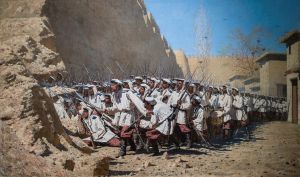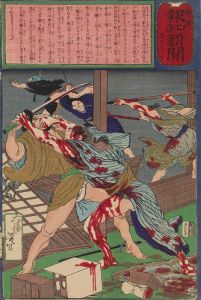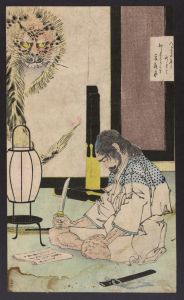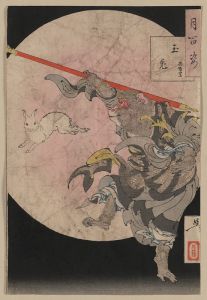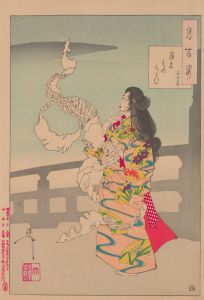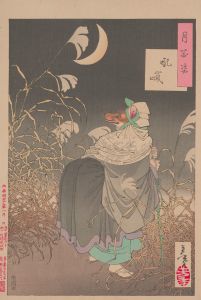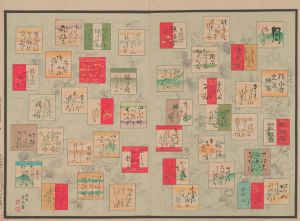
Famous Places of the East; The Ancient Incident of Umewaka and the Child Seller beside the Sumida River
A hand-painted replica of Tsukioka Yoshitoshi’s masterpiece Famous Places of the East; The Ancient Incident of Umewaka and the Child Seller beside the Sumida River, meticulously crafted by professional artists to capture the true essence of the original. Each piece is created with museum-quality canvas and rare mineral pigments, carefully painted by experienced artists with delicate brushstrokes and rich, layered colors to perfectly recreate the texture of the original artwork. Unlike machine-printed reproductions, this hand-painted version brings the painting to life, infused with the artist’s emotions and skill in every stroke. Whether for personal collection or home decoration, it instantly elevates the artistic atmosphere of any space.
Tsukioka Yoshitoshi, a prominent Japanese artist of the late Edo and early Meiji periods, is renowned for his innovative and dramatic woodblock prints. One of his notable works is "Famous Places of the East; The Ancient Incident of Umewaka and the Child Seller beside the Sumida River." This piece is part of Yoshitoshi's broader exploration of historical and legendary themes, often infused with a sense of drama and emotion that characterizes much of his work.
Yoshitoshi was born in 1839 and became a leading figure in the ukiyo-e genre, a style of woodblock print and painting that flourished in Japan from the 17th through 19th centuries. His career spanned a period of significant cultural and political change in Japan, as the country transitioned from the Edo period to the Meiji era. This transition influenced Yoshitoshi's work, as he often depicted traditional themes with a modern sensibility.
The print "Famous Places of the East; The Ancient Incident of Umewaka and the Child Seller beside the Sumida River" draws on a poignant story from Japanese folklore. The tale of Umewaka is a tragic narrative about a young boy who is kidnapped and sold into slavery. The story is set against the backdrop of the Sumida River, a significant geographical and cultural landmark in Tokyo. The river has been a source of inspiration for many artists and writers throughout Japanese history, symbolizing both beauty and the passage of time.
In Yoshitoshi's depiction, the emotional weight of the story is conveyed through his masterful use of color, composition, and expression. The print captures the moment of the child's despair and the sinister presence of the child seller, creating a powerful contrast that highlights the themes of innocence lost and the harsh realities of life. Yoshitoshi's ability to evoke such deep emotion is a testament to his skill as an artist and his understanding of the human condition.
Yoshitoshi's work is often noted for its psychological depth and complexity. He was deeply interested in the human psyche and the darker aspects of life, which is evident in many of his prints. This particular piece reflects his fascination with stories that explore themes of suffering, resilience, and the struggle between good and evil.
The print is also significant for its technical excellence. Yoshitoshi was known for his innovative use of color and his ability to create dynamic compositions that draw the viewer into the scene. His attention to detail and his ability to convey movement and emotion through the medium of woodblock printing set him apart from many of his contemporaries.
Yoshitoshi's legacy as an artist is profound, and his works continue to be celebrated for their artistic and historical significance. "Famous Places of the East; The Ancient Incident of Umewaka and the Child Seller beside the Sumida River" is a prime example of his ability to blend traditional Japanese themes with a modern artistic approach, creating works that resonate with audiences both in his time and today.








